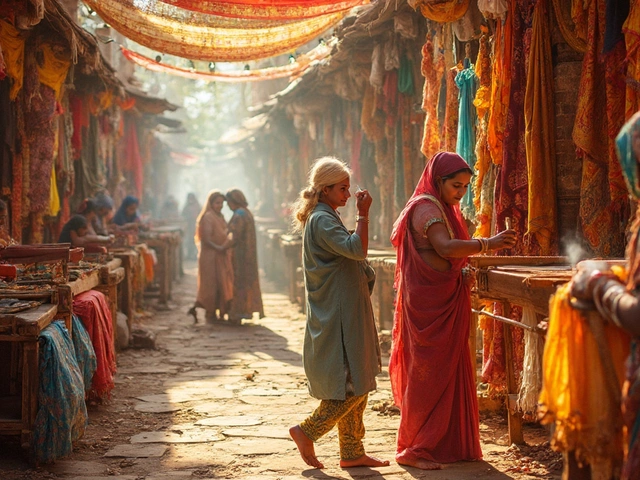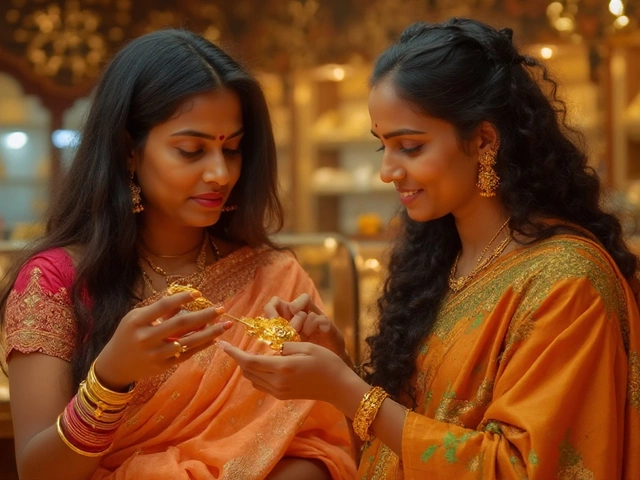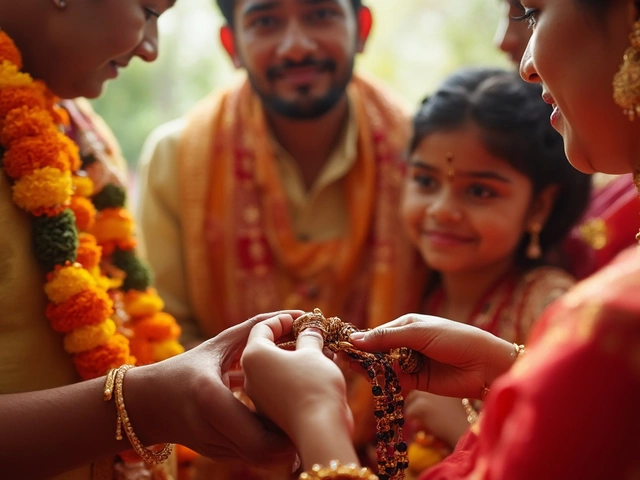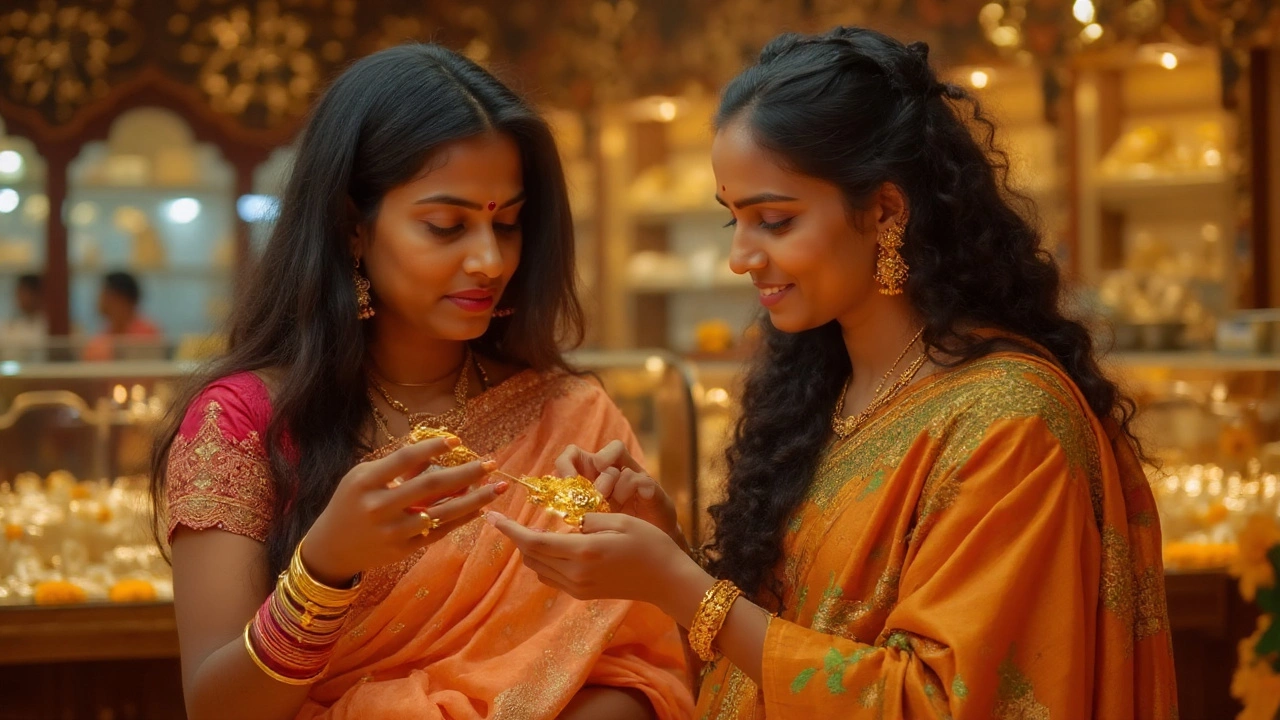
If you think gold is just a shiny metal, you probably haven’t walked through a bustling Indian market. Here, gold is savings, a symbol, a family story. But with so many types—24K, 22K, 18K, 14K—how do you know which one’s really right for you? Should you go for pure, investment-grade gold, or sturdy jewelry that stands up to daily life? Too many people buy the wrong type just because a cousin or neighbor said it’s “the best.” They end up stuck with pieces that are either too delicate or don’t hold value. Let’s get seriously practical and dig into which type of gold makes sense in India today, so your next purchase actually matches your needs.
Understanding Gold Purity: Decoding Karats for Indian Buyers
First, let’s clear up what those karat numbers even mean. You’ll see 24K, 22K, 18K, even 14K stamped on jewelry tags or gold bars. Karats tell you the percentage of pure gold in the mix—24 parts out of 24 is pure gold, or 99.9% purity. That’s what’s in 24K. The minute any other metal (like copper, silver, or zinc) is blended in, the karat number drops. So, 22K is 22 parts gold and 2 parts other metals, so about 91.6% purity. Here’s what it usually looks like in India:
| Type | Purity (%) | Common Use |
|---|---|---|
| 24 Karat (24K) | 99.9% | Investment, Coins, Bars |
| 22 Karat (22K) | 91.6% | Jewelry |
| 18 Karat (18K) | 75% | Designer Jewelry |
| 14 Karat (14K) | 58.3% | Lightweight/Fashion Jewelry |
What a lot of people don’t realize is that pure gold (24K) is surprisingly soft and bends easily. That’s why you rarely find 24K gold used in regular jewelry in India. Yes, it’s the purest—but one twist of a bangle, and you might end up with a very expensive squiggle. Most Indian gold bangles, necklaces, and earrings are 22K, which is hard enough for everyday use but still beautiful and valuable. 18K and 14K gold? Those are for trendier, western-style jewelry—stronger, yes, but less yellow and rich-looking, which some people don’t prefer unless it’s for daily-wear rings or work earrings.
If you’re thinking about investment, 24K is unbeatable for purity—you get maximum gold per rupee. But if you want something that won’t lose shape after being passed down to your kids, 22K is the actual go-to in households across India. A little surprising fact: India imported over 600 tons of gold jewelry in 2024, with more than 80% being 22K. That tells you where the demand sits.
22K vs. 24K Gold: Which One is Right for You?
Deciding between 22K and 24K gold isn’t just about purity; it’s about what you want from your gold. Let’s break it down. If you’re looking for an investment in the form of coins or bars, nothing tops 24K gold. Here, purity is everything because resale depends on weight and carat. You can easily sell or trade bullion with no design or craftsmanship charges to complicate things. The Reserve Bank of India—the folks printing your rupee—uses 24K gold in Sovereign Gold Bonds. Even the big banks prefer 24K for their minted coins. That should tell you something.
Now, if your heart is set on jewelry—the kind you actually want to wear—then 22K is the hero. It’s what most Indian jewelers use for gold necklaces, mangalsutras, and bridal sets. Why? Because it’s strong enough to hold delicate designs, gemstones, and withstand being worn at festivals, weddings, and everyday life. Ever wonder why your grandmother’s gold chain still shines after 40 years? Chances are, it’s 22K originally bought as a wedding gift, mixing tradition and daily practicality. If you go for 24K jewelry, be warned: it looks great in a box, but it’s too soft to wear every day.
18K and 14K are getting popular among younger folks who want sleek, Western looks, or those who care more about fashion than tradition. They cost less and don’t tarnish as quickly, making them a good pick for modern rings or earrings you don’t want to fuss over. Don’t be surprised if you see designer brands using 18K, especially with diamonds—they need extra strength for elaborate settings.
- For Savings/Investment: Think 24K bars, coins, government issues. Easy to store, quick to sell.
- For Family Jewelry: 22K is still the classic. Keeps value, rugged enough for generations.
- For Trendy or Daily-Wear: 18K and 14K pieces mix fashion, function, and still shine up nicely.
One thing most people don’t consider is “making charges.” That’s the labor cost for each piece—and it can eat up to 25% of the jewelry price! Higher purity gold (like 24K) is harder to work with, so expect to pay more if you demand 24K jewelry. 22K hits the sweet spot: easier to shape, less waste, and those charges stay reasonable.
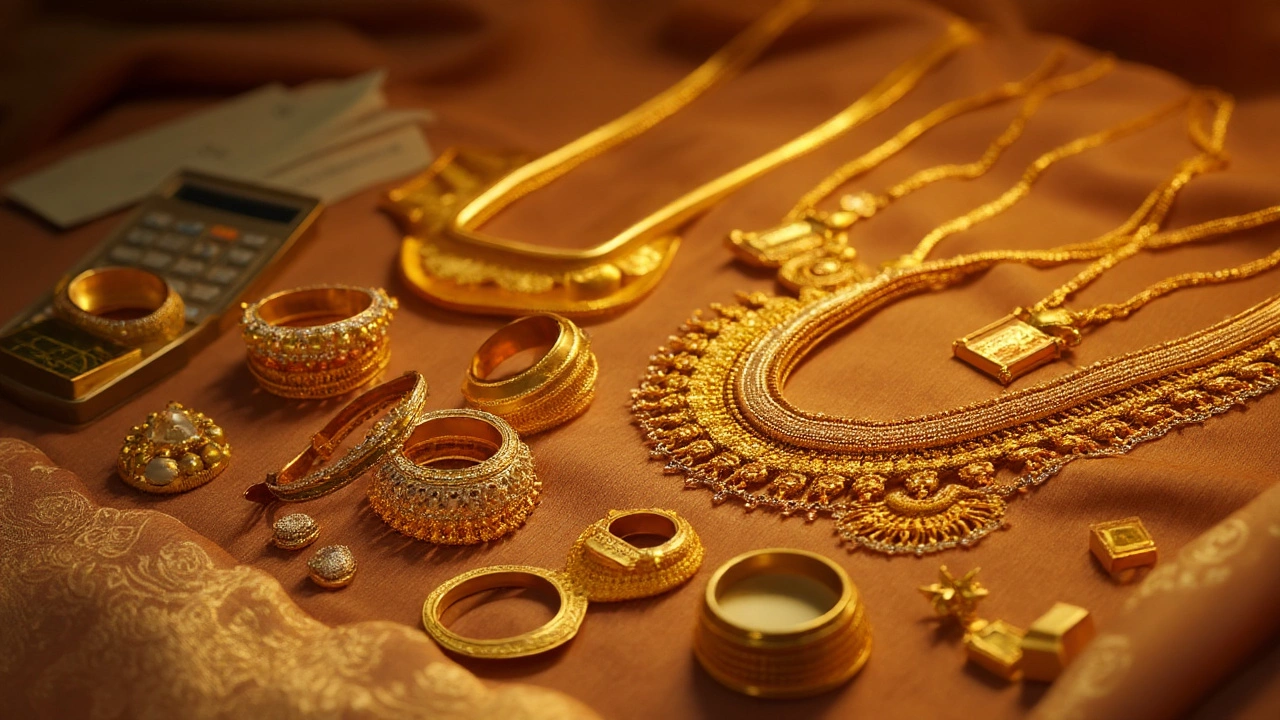
Gold in Indian Culture, Festivals, and Family: Why 22K Rules the Market
Ask anyone who’s attended an Indian wedding—they’ll tell you, gold never takes a back seat. From babies’ anklets at their naming ceremonies to ornate bridal sets on wedding days, gold is woven into nearly every family event. But rarely will you spot 24K necklaces dangling at a Sangeet or Karva Chauth. The reason? The legend of 22K gold. It balances purity, strength, and the “yellow” beauty people crave. In fact, most temple jewelry—the ones dancers wear on stage and at religious festivals—is hand-forged cotton 22K. Go to jewelers in Chennai, Hyderabad, or Kolkata, and you’ll find 22K as standard for these heavy, detailed designs.
Let’s look at some numbers. According to the World Gold Council, Indian households hold over 25,000 tons of private gold—nearly all in 22K jewelry. That’s more than the reserves held by the top 10 central banks combined. Gold is still the No. 1 gift during Akshaya Tritiya or Diwali, with over 50% of total annual gold jewelry sales happening during the festival season. And across South India, it’s common for mothers to pass down 22K gold bangles to daughters on their wedding day—not only as a sign of affection but as real-life insurance against rainy days.
Still, not everyone follows tradition to the letter. The metro crowd, who love diamonds and minimalist styles, often go for 18K—because it keeps the settings secure and the pieces lightweight. Bollywood stars flaunt chunky rose gold (often 18K) at film launches. But step into any rural heartland—be it Punjab, Gujarat, or Tamil Nadu—and 22K reigns supreme for all family and religious occasions. It’s not just gold; it’s memory, status, and security rolled together.
Choosing the Right Gold: Real-Life Tips for Indian Shoppers
So, when it’s finally time to buy, what should you look for? First, always check for the BIS Hallmark—a tiny stamp that certifies the gold’s purity, whether it’s 24K, 22K, or lower. Since the Hallmarking Act of 2019, it’s illegal for jewelers to sell unmarked gold in most cities, so don’t let anyone convince you otherwise. Bring a magnifying glass if you need to; fakes are still out there.
Next, compare the “making charges.” These are rarely fixed, and savvy shoppers know to negotiate down, especially at big chain stores. For 22K jewelry, typical making charges run 8-22%, but in showrooms during Dhanteras or Gudi Padwa, deals drop even lower. Always ask for an itemized bill—the cost should break out the gold value (by weight and purity), making charges, and GST tax separately. If the bill is all-in-one, you may be getting overcharged.
- Avoid impulse buying. Festival deals look tempting, but prices often spike during peak buying months like October and May.
- If you’re thinking investment, open a digital gold account or go for sovereign gold bonds to skip making charges altogether.
- For wedding jewelry, 22K is your safest bet. Many pawnshops or banks refuse to accept 24K jewelry that’s bent or scratched; 22K keeps its shape and resale easier.
- If it’s a regular-wear ring or delicate chain, don’t shy away from 18K or 14K, especially if you’re prone to losing small pieces—less loss if it breaks.
- If you love colored stones, go lower on karat. Stones set in 22K or higher pop out more easily due to the softness of the surrounding gold.
- Stick with major jewelers or BIS-certified shops. Street sellers or itinerant goldsmiths might cut corners on purity.
- Save your purchase receipts and certificates. If you plan to re-sell or exchange, these can boost your return value by 5-10% at most jewelers.
If you’re still unsure, ask yourself this: Is this gold something you’ll wear every week, or is it for a special stash you’ll pull out during emergencies? That single decision will steer you toward the right karat. At the end of the day, gold is personal—blending finance, fashion, tradition, and family history into one glittery decision. In India, each karat tells its own story. Pick the one that fits yours, and you won’t go wrong.
